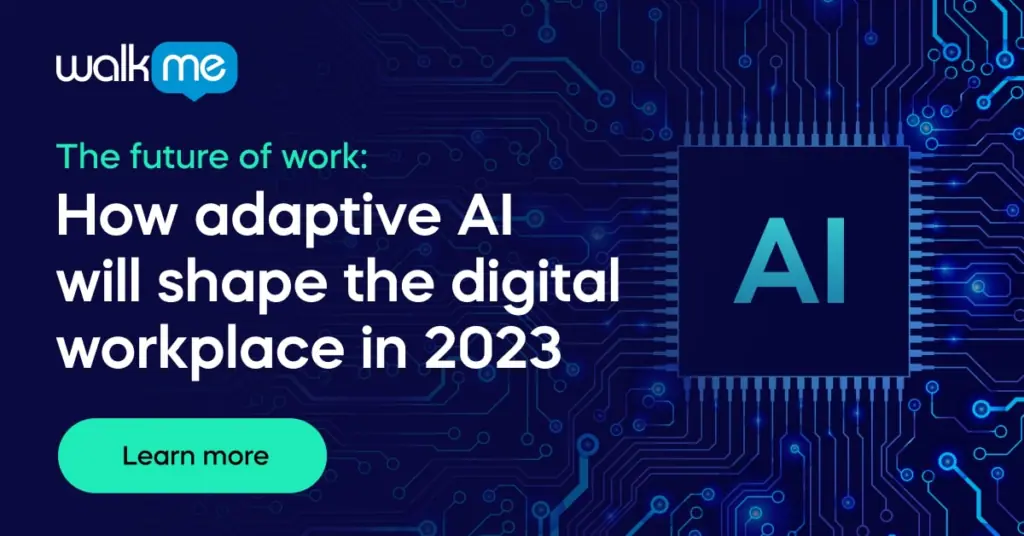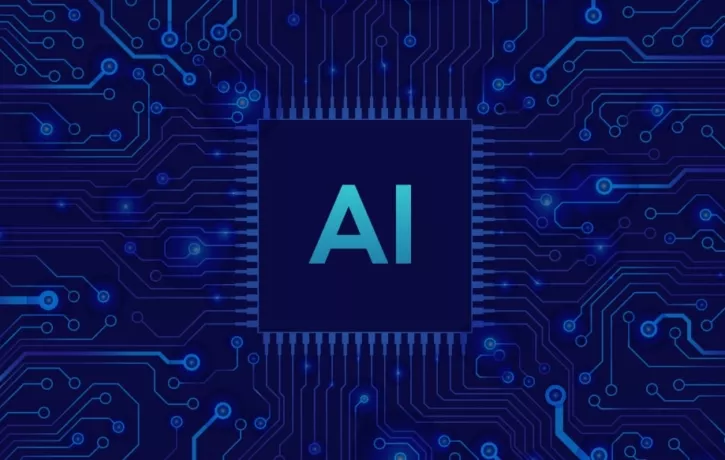Artificial intelligence is constantly evolving and becoming more adaptive daily within our increasingly digital world. Next year, expect to see even more AI implementations that can change and learn according to the individual needs of their users or businesses.
These are some reasons why Gartner named adaptive AI as one of its top strategic technology trends of 2023. Gartner predicts that companies using adaptive AI by 2026 will outperform competitors by 25%.
But what is adaptive AI? How will adaptive AI improve the customer experience? And what are the adaptive AI best practices? This blog explores all these questions, beginning with a definition.
What is adaptive AI?
Adaptive AI is the next evolutionary step, combining artificial intelligence with a more advanced and responsive way of autonomously learning. Systems that utilize adaptive AI can quickly adapt to changes in circumstances that were not available during initial AI development. They achieve this by constantly retraining models and learning within runtime and development environments based on new data.
Their use of real-time feedback allows them to change their learning dynamically and adjust goals on the fly, making them especially adept in operations that require instant response to sudden changes or new objectives within a digital workplace.
Gartner describes the value of operationalized AI as the ability to rapidly adapt, deploy and develop, maintaining AI across different environments within an organization. But how can companies deploy AI to improve the customer experience?
How will adaptive AI improve the employee experience?
The implications of adaptive AI on employee experience are vast and game-changing. Brian David Crane, the founder of Spread Great Ideas, explains this point. “By analyzing social, behavioral, and past interactions, adaptive AI uses continuous interactions.” AI use these interactions to help streamline employee workflows.
Crane goes on to explain that adaptive AI focuses on feelings and emotions and analyzes sentiments to create perfect interactions on a real-time basis, similar to the way humans interact.
With an understanding of how adaptive AI works, we can look at best practices.
Adaptive AI best practices
It is essential to follow best practices when implementing adaptive AI. The first of these practices involves reengineering various processes.
- IT leaders must re-engineer various processes to build adaptive AI systems that can learn and change their behaviors based on different circumstances.
- When companies implement decision intelligence capabilities, it broadens the ability to make decisions and makes them more flexible.
- Adaptive AI creates a user experience that is not only superior but also faster by adapting to real-world circumstances as they change.
Follow these best practices to ensure optimal success when you implement adaptive AI. But what other factors should be considered when using adaptive AI, such as continual learning?
Adaptive AI & continual learning
As AI continues to evolve, it becomes more adaptive and capable of learning independently. This action led to continual learning, a form of AI that builds understanding to improve over time. This feature makes it a potent tool and one that could potentially revolutionize many industries. This change was part of the shift that moved from static machine learning to adaptive machine learning or continual learning.
Autonomous vehicles and the internet of things change and access data at unprecedented rates. This capability makes modern machine learning challenging to rely on, as the data flow never ends, but companies do not always review models to adapt to AI’s changing capabilities.
Ph.D. researcher at the KU Leuven Institute for Artificial Intelligence, Mathias De Lange, adds that “Continual Learning aims to tackle this problem by taking a closer look at adaptive machine learning models, adapting flexibly and continuously to the never-ending stream of data.”
Mathias uses the example of an object detection system for a self-driving car, where AI learns to improve upon its past experiences of avoiding pedestrians to reduce risk to others.
Now it is clear what continual learning is; what are the four ways that AI uses its capabilities to optimize data?
4 ways adaptive AI is optimizing data
One of the most significant benefits of adaptive AI is that it optimizes data. The first of four ways it accomplishes this is how companies implement it within various industries.
1. Multi-industry use
Robots are replacing humans in many jobs, but they aren’t the only ones benefiting from advances in AI. As operational responsiveness improves across various sectors, so does productivity and financial profitability across many different business units in many industries.
2. Scalability
Adaptive AI employs a sequence-based data analysis instead of conducting its gathering and processing simultaneously. Doing so allows learning from new experiences while still working on previous predictions–all at a much faster pace due to the ability to receive large amounts of real-time data-based feedback.
The old-fashioned method of AI generates insights slower because it can’t adapt to sudden changes, like a natural disaster or war.
3. Data-driven forecasts
Adaptive AI can offer predictions based on its adaptive learning process. It screens and learns the new changes made to data, generating insights that can help improve future business performance. Thus, decision-makers are embracing this type of AI as it allows them to make more informed decisions based on data analytics.
4. Increased data security management
Exchanging data has contributed to the expansion and richness of publicly accessible digital businesses. But this trend also creates safety concerns. Gartner estimates that in 2026, artificial intelligence driven by AI TRiSM will handle automated trust metrics instead of external intermediaries, reducing risks by 50%. However, companies must consider balancing AI risk and security management with data integrity.
Adaptive AI has a huge potential to optimize data. But, what other trends and practical uses are there for this technology?
Trends & practical uses for adaptive AI
There are many practical uses for adaptive AI in many industries. The first industry we will look at is healthcare.
Healthcare
The U.S. Food and Drug Administration (FDA) is implementing a certification program for AI-enabled products used in hospitals, which could soon see widespread use throughout America.
These software programs can analyze a patient’s vital signs to recommend drug doses or determine which patients are at higher risk for disease and need further assessment.
eLearning
Schools and teachers are now using adaptive technologies to modify class lessons and materials according to individual needs and learning pace. They expect personalized education journeys to increase the completion rates for high school levels, college degrees, and certificate courses.
Trust risk and security management
AI systems learn and adapt. They can perceive small changes in online behavior that humans would miss. AI is better than humans at identifying blind spots, protecting identities and business-critical applications, detecting cyber threats, responding to ongoing threats, and providing recovery solutions.
As opposed to rule and policy-based security solutions that are no longer effective, AI provides a more holistic approach to enterprise network security. AI can secure against the unknown and make it a more comprehensive solution for modern businesses.
These are the ways specific industries use adaptive AI. But how are we likely to utilize adaptive AI in future strategic objectives?
Looking ahead: The future of adaptive AI
AI is becoming more powerful each year as the tech industry develops it further, and AI for business is becoming an expected part of the tech stack in the workplace of the future. The first way AI is likely to manifest in business is through industry cloud platforms.
Industry cloud platforms
Businesses must invest in industry cloud platforms, platform engineering, and wireless value realization to allow growth. According to Gartner, industry cloud platforms will help companies increase profits from 2023 onwards. The analyst predicts that by 2027, organizations will use cloud platforms for over 50% of their business initiatives.
Platform engineering—self-service internal developer platforms intended for software delivery and life-cycle management—can improve the developer experience and product delivery. According to Gartner, by 2026, 80% of software-engineering companies will have platform teams incorporating self-service portals.
Sustainable technologies
In 2023, not only will companies need to focus on sustainability, but they’ll also need to be wary of investors’ top concerns: profit and revenue. Business leaders have gradually become more aware of their technological responsibilities in meeting environmental goals.
A recent Gartner survey found that 63% of respondents said they’re “somewhat” or “extremely” concerned about the need for sustainable technology. As AI develops, it enables enterprise sustainability in many ways.
Gartner analyst David Groombridge stated that sustainable technology investment must consider its effect on the environment and future generations, with the goal being “sustainable by default.” This point highlights the significance of sustainable technology trends for 2023.
Emissions management software is one example of how sustainable technology trends for 2023 can save financial resources and the environment as part of a sustainable digital transformation.
Digital immune system
Leaders should focus on digital immunity, observable data, and artificial intelligence if they want to optimize their companies in 2023, as stated by Gartner.
By investing in technology that allows for digital immunity or a “digital immune system,” organizations can reduce system downtime by up to 80%. Utilizing a digital immune system pleases customers and increases business value while lessening IT operations’ risks.
While some data is difficult to observe, logs, traces, and metrics are valuable tools for building IT systems. They enable organizations to keep track of who made changes. In these ways, applied observability is often the most impactful source of data-driven decision-making.
Super-apps
One of the top tech trends for pioneers, as listed by Gartner, is “super apps.”
According to Gartner, a super-app incorporates the features of an app, platform, and digital ecosystem to replace multiple apps and improve financial performance. These apps have functions that allow users to access mini-apps published by third-party platforms.
These applications aim to provide users with a one-stop shop for all products and services; Gartner predicts that more than 50% of the global population will use super apps by 2027.
It is essential for business leaders to consider all of these strategic technology trends for 2023 and beyond to optimize their use of adaptive AI as it develops and evolves.
Invest in adaptive AI today
It’s no secret that adaptive artificial intelligence is on the rise as one of the top strategic technology trends of 2023. What may be a secret to some is how early they should start investing in adaptive AI technology to improve digital resilience and stay ahead of the tech disruption curve.
Adaptive AI allows businesses to improve many aspects of employee experience, such as employee onboarding, which is critical to boosting retention. It also helps companies to automate processes and improve decision-making based on data analytics. With all of these benefits, it’s essential to begin investing in adaptive AI today.


